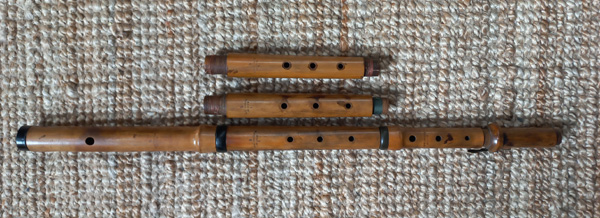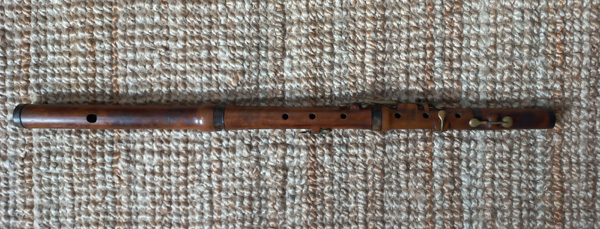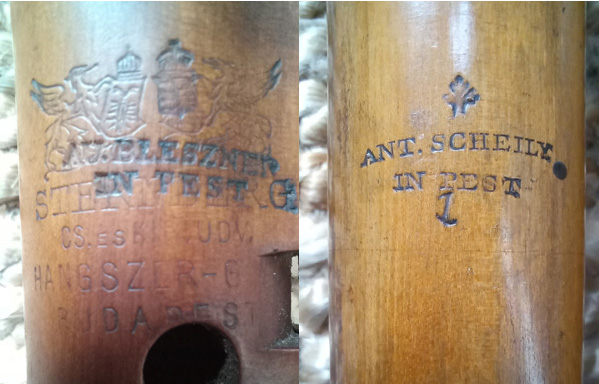see english below…
Régi magyar fuvolák jártak nálam Mihály György gyűjtő jóvoltával, aki kiemelkedő fúvóshangszer-gyűjteményt tudhat magáénak. Kettővel felvételt is készítettem – kissé kapkodva – sajnos a többivel nem tudtam elmélyedni igazán, illetve nem voltak igazán játszható állapotban. A hangszerek egy fotózásra érkeztek Budapestre, ahol a “Magyar Fuvolázás 200 éve” című kötet borítóján jelennek majd meg.

Scheily egybillentyűse
A két fuvola két pesti mester munkája, cca 1830 körüliek. Az egyik Scheily/Schaily műhelyéből került ki – ez az egybillentyűs. A másik Bleszner Antal munkája, aki a Scheilynél sajátította el a fuvolakészítés fortélyait. Egyik fuvola sincs teljesen jó állapotban, de meglepő mennyire karakteres hangi adottsága van mindkettőnek ilyen állapotban is, ezért ugyan az a művet – Lewis Granom Siciliano-ját – játszottam mindkettőn. Nagy kérdés és fehér folt is, hogy vajon milyen minőséget képviseltek a 19. század első felének pest-budai fuvolakészítői, de e fuvolák alapján talán nem túlzás kijelenteni, hogy a kitűnő minőség mellett még egyfajta egyéniséggel is rendelkeznek.

Bleszner ötbillentyűse

I had old Hungarian flutes courtesy of the collector György Mihály, who has an outstanding collection of wind instruments. I also made a recording with Kett – a bit hastily – unfortunately I couldn’t really go into depth with the others, and they weren’t in a really playable condition. The instruments arrived in Budapest for a photo shoot, where they will appear on the cover of the book “200 Years of Hungarian Fluting”. Scheily’s one-keyboard The two flutes are the work of two masters from Pest, circa 1830.
One of them came out of the Scheily/Schaily workshop – this one-keyed. The other is the work of Antal Bleszner, who learned the tricks of flute making at Scheily. None of the flutes are in perfect condition, but it is surprising how much characterful voice they both have in this condition, so I played the same work – Lewis Granom’s Siciliano – on both. It is a big question and a white spot as to what quality the Pest-Buda flute makers of the first half of the 19th century represented, but based on these flutes, it is perhaps not an exaggeration to say that in addition to excellent quality, they also have a kind of individuality.
